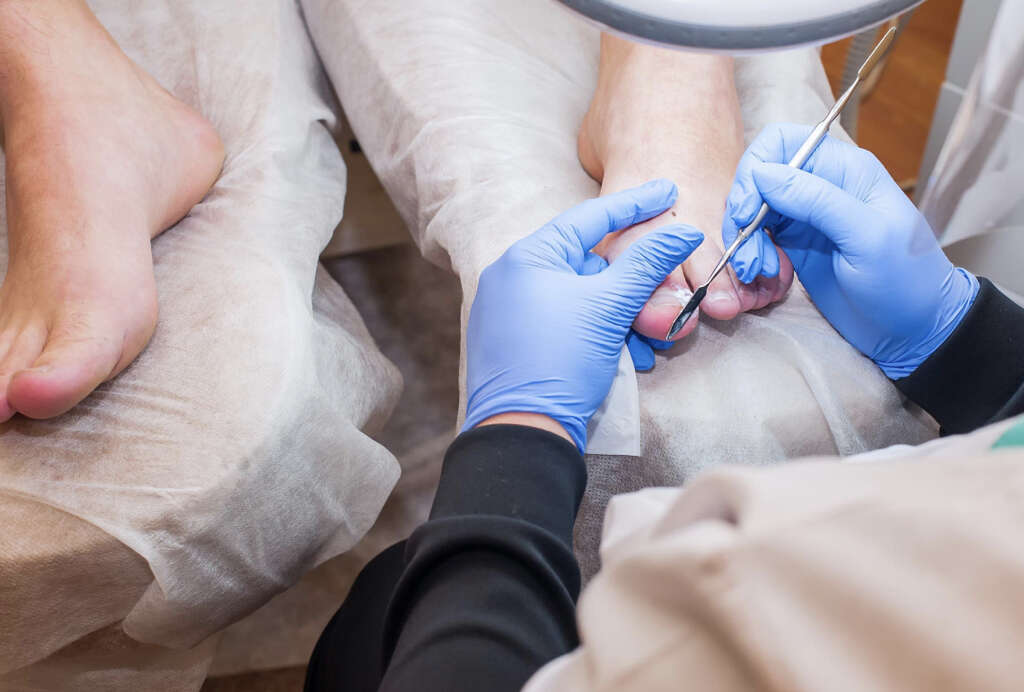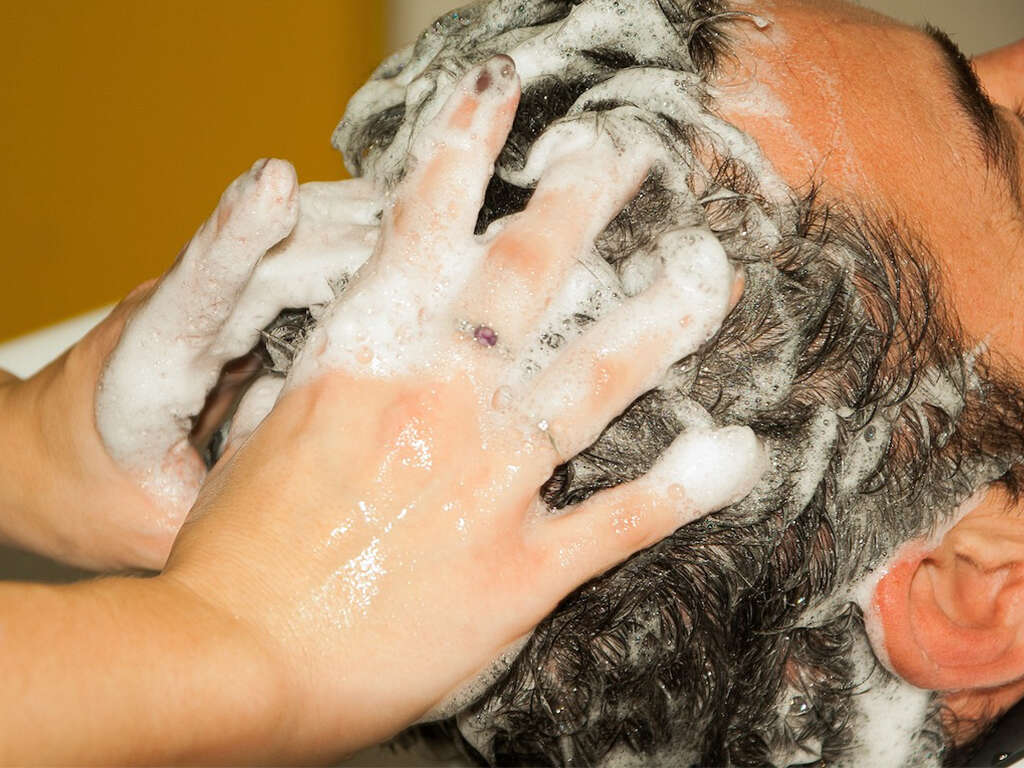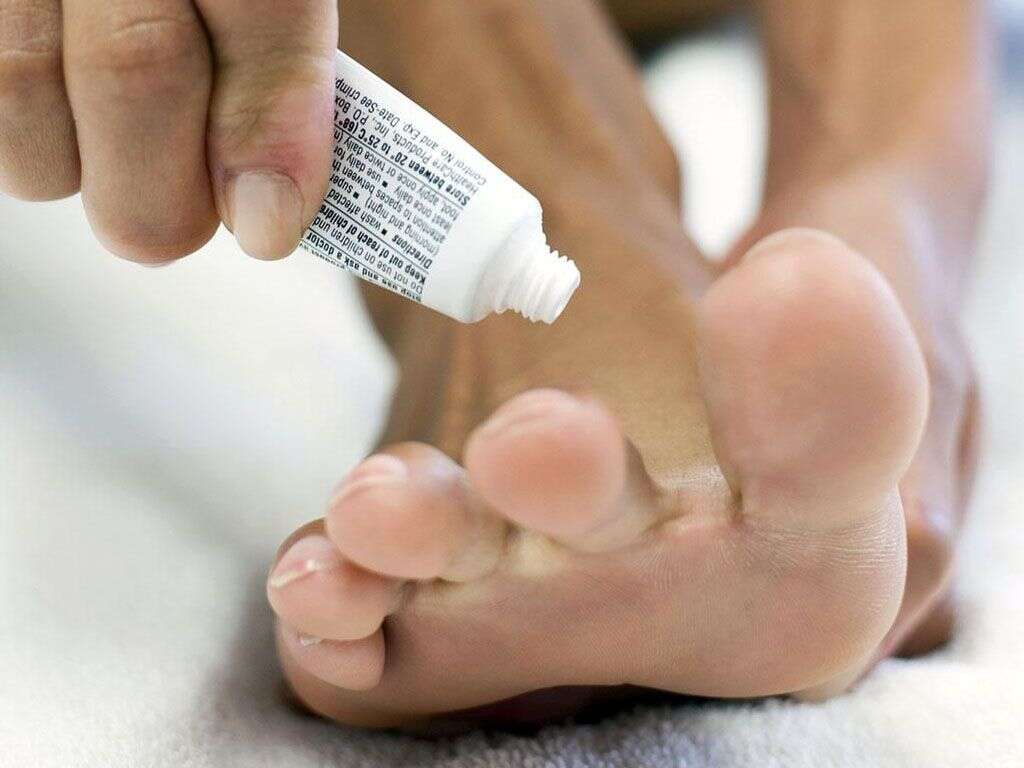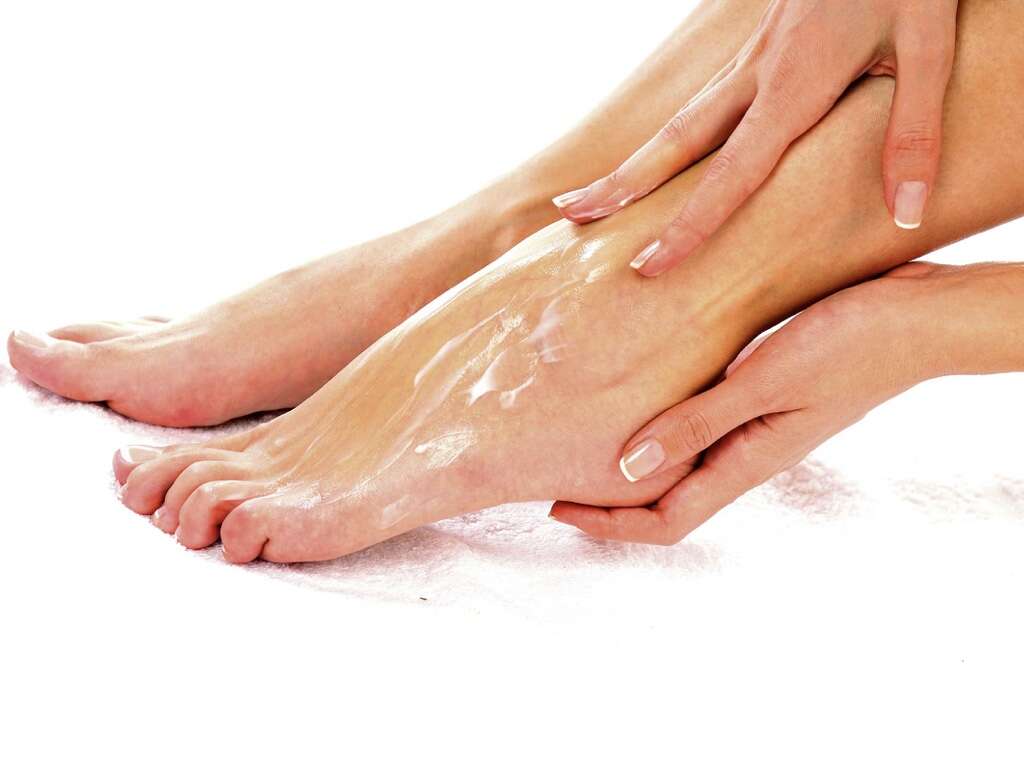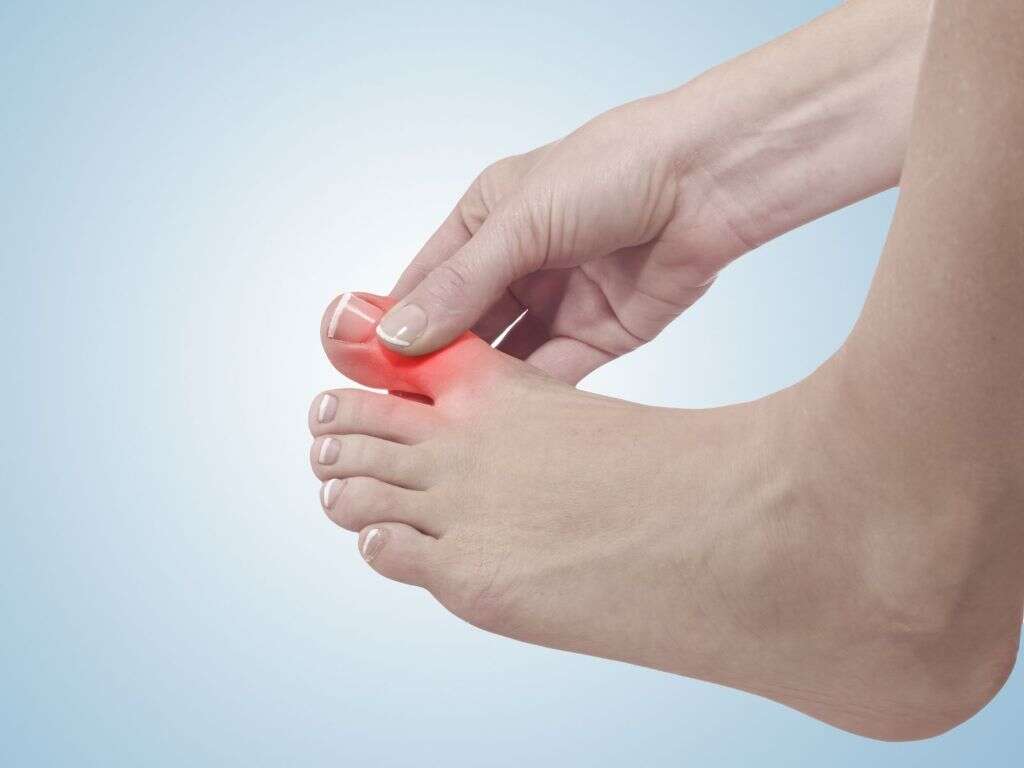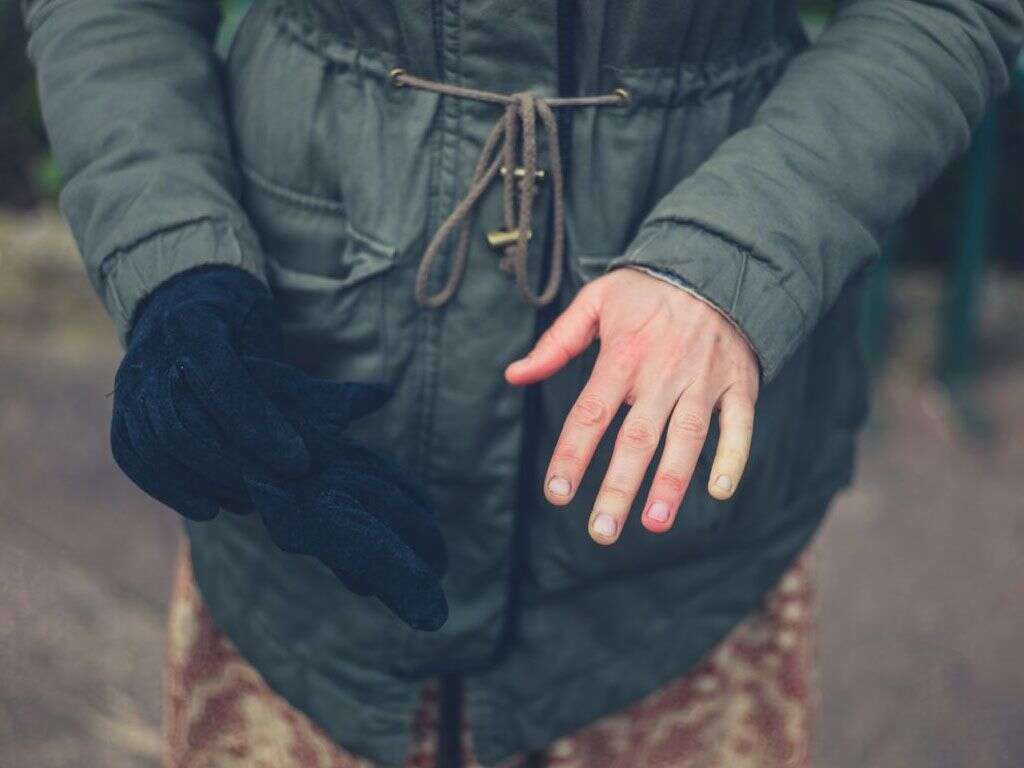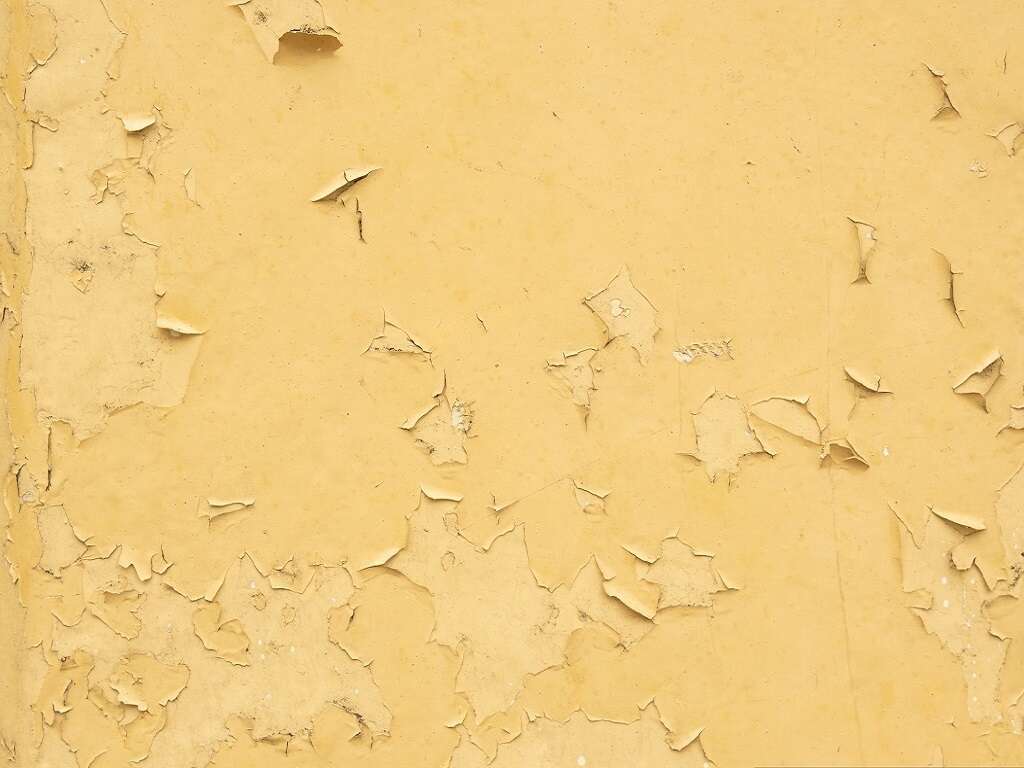What Is Tinea Pedis?
 Article Sources
Article Sources
- 1. Gupta, AK et al. 'Optimal Management of Fungal Infections of the Skin, Hair, and Nail.' External American Journal of Clinical Dermatology vol. 5,4 (2004): 225-37. doi:10.2165/00128071-200405040-00003.
- 2. Crawford, F. and S. Hollis. Topical Treatments for Fungal Infections of the Skin and Nails of the Foot. Cochrane Database of Systematic Reviews vol. 18,3 (2007): CD001434. doi:10.1002/14651858.CD001434.pub2.
- 3. Gupta, A.K. and E.A. Cooper. Update in Antifungal Therapy of Dermatophytosis. Mycopathologia vol. 166,5-6 (2008): 353. doi:10.1007/s11046-008-9109-0.
Tinea pedis is a fungal disease that affects the foot. It is commonly referred to as athlete’s foot. The fungi that cause the condition are related to the same fungi that cause jock itch and ringworm. Moisture and lack of airflow create an environment conducive to fungal growth.
Athlete’s foot is contagious and spreads easily in shared environments where moisture tends to accumulate. It is treatable, but the condition can become chronic with recurring infections.1Gupta, AK et al. ‘Optimal Management of Fungal Infections of the Skin, Hair, and Nail.’ External American Journal of Clinical Dermatology vol. 5,4 (2004): 225-37. doi:10.2165/00128071-200405040-00003. Tinea pedis is also preventable with proper hygiene and precautionary measures.
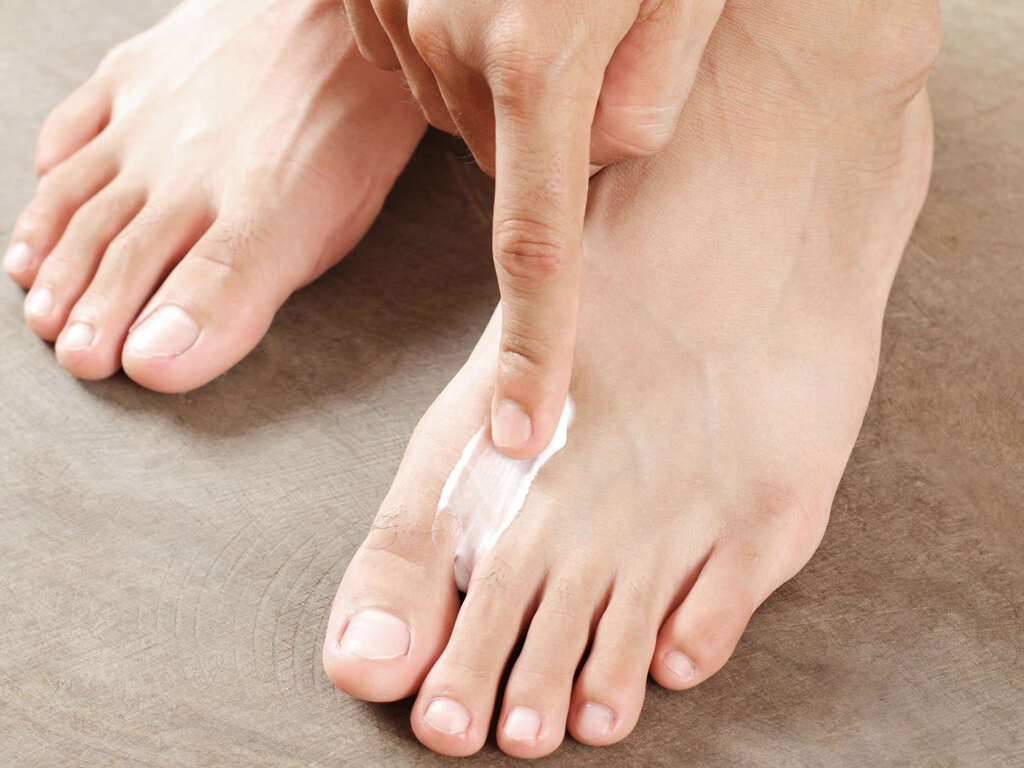
1. Causes
Athlete’s foot is a fungal infection, and multiple species of fungi can cause it. The three most common species are Trichophyton rubrum, Trichophyton interdigitale and Epidermophyton floccosum. The infection is the most prevalent of dermatophyte infections.
The fungi that cause tinea pedis require moisture for growth. Humid and wet conditions perpetuate the survival and growth of fungus. The condition is prevalent in urban environments in tropical, humid and hot regions.
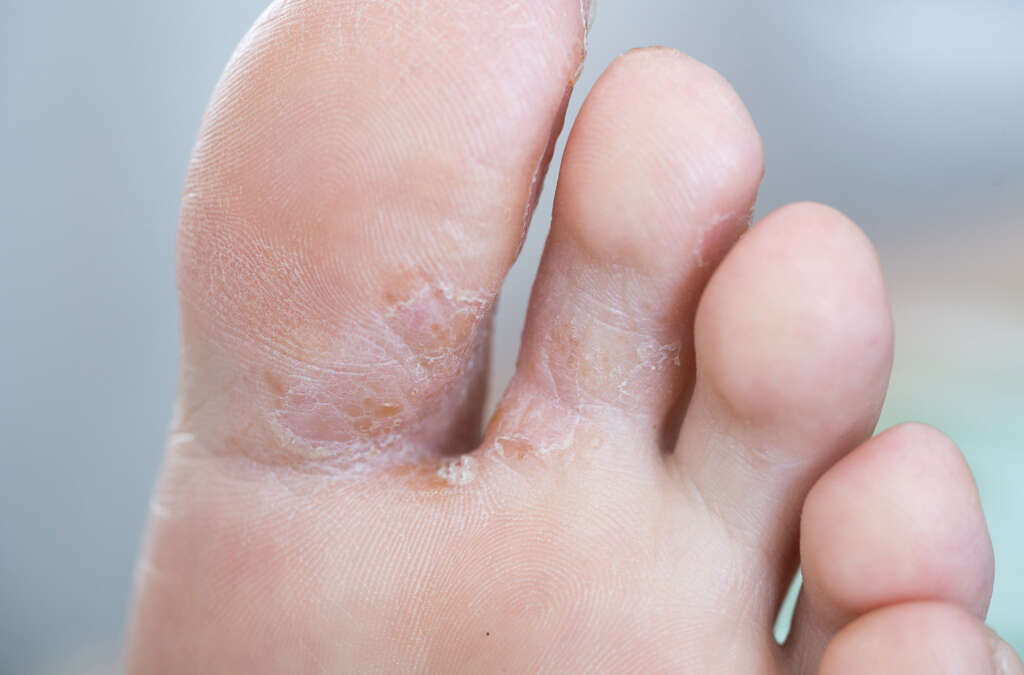
2. Risk Factors
Tinea pedis occurs most often in male adolescents, but it can affect both sexes in any age group. People who wear tight-fitting shoes are at higher risk of contracting the infection, as well as those whose feet sweat excessively. Sharing towels or walking barefoot in communal showers, locker rooms, swimming pools and other moist environments increases the likelihood of developing athlete’s foot.
Certain medical conditions leave people vulnerable to the fungi that cause tinea pedis. Poor circulation, diabetes and immune system deficiencies all raise the risk of a fungal foot infection. Corticosteroid medications and drugs used to treat immune disorders can also increase the likelihood of athlete’s foot.
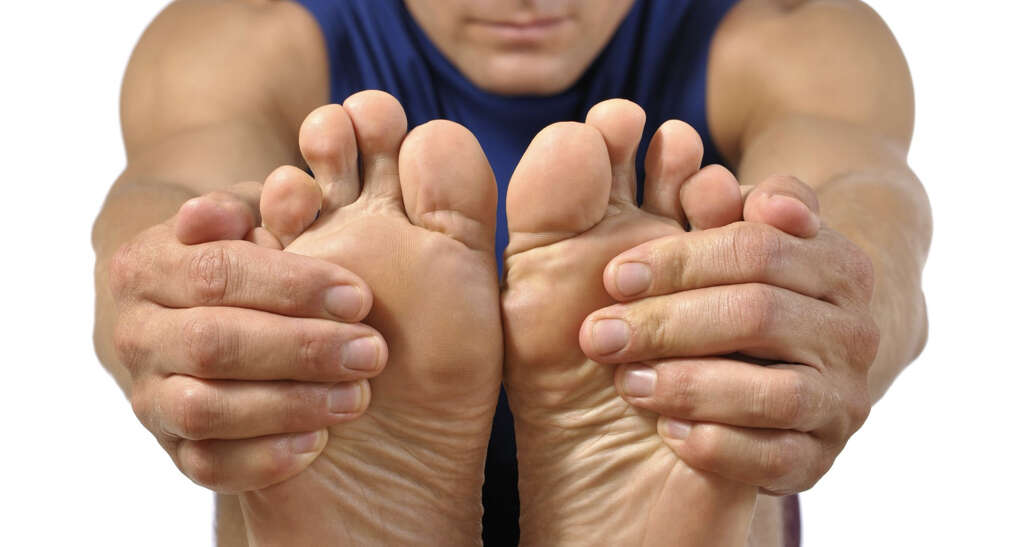
3. Transmission
Tinea pedis is easily transmissible in the right environments. It can spread through direct contact with the affected skin of a person who is infected. It can also spread via contact with wet or moist surfaces where the fungus survives. This often occurs in public or shared spaces such as swimming pools, showers and locker rooms. The fungi can also survive on towels, bed linens, mats or clothing.
When infected person’s walk barefoot on a moist surface, some of the fungal spores shed onto the area. The fungi spores persist there until they find a new host in the next uncovered foot that passes over the contaminated surface. The same process applies when an infected person uses or wears an item that is then used by someone else.

4. Diagnosis
In a majority of cases, a doctor is able to identify and diagnose tinea pedis through an evaluation of symptoms. The characteristic features of the infection generally make it easy to diagnose. The doctor assesses the infected area, which is generally on the feet and most often in the space between the toes.
If the cause of the condition is unclear, the healthcare provider may take a scraping of the skin in the infected area. The sample is then analyzed for the presence of the fungus. This process is also used to rule out alternative diagnoses, such as eczema or psoriasis.
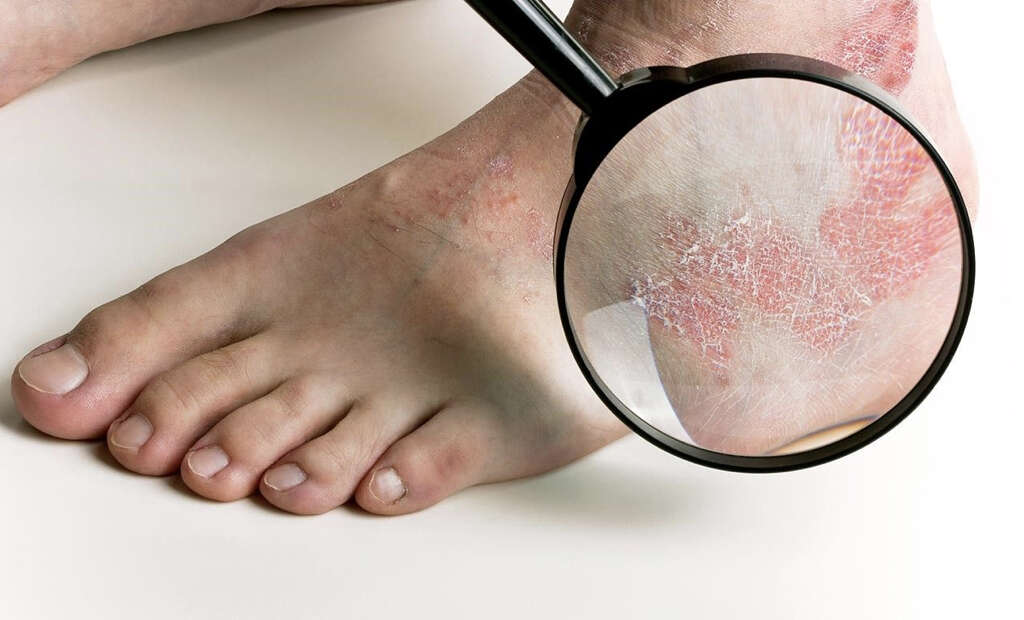
5. Signs & Symptoms
Tinea pedis often presents as an asymmetrical rash on one or both feet in the form of blisters or erosions. Frequently, the condition starts in the area between the fourth and fifth toes. If T. rubrum is the causal fungus, it leads to the moccasin type rash, which appears as scaling and dryness on the sole and sides of the foot.
The infection can also result in blisters that erupt on the inner area of the foot. These blisters tend to be small to medium in size. Rarely, athlete’s foot leads to fluid-filled pustules or ulcerations and oozing in the space between the toes.
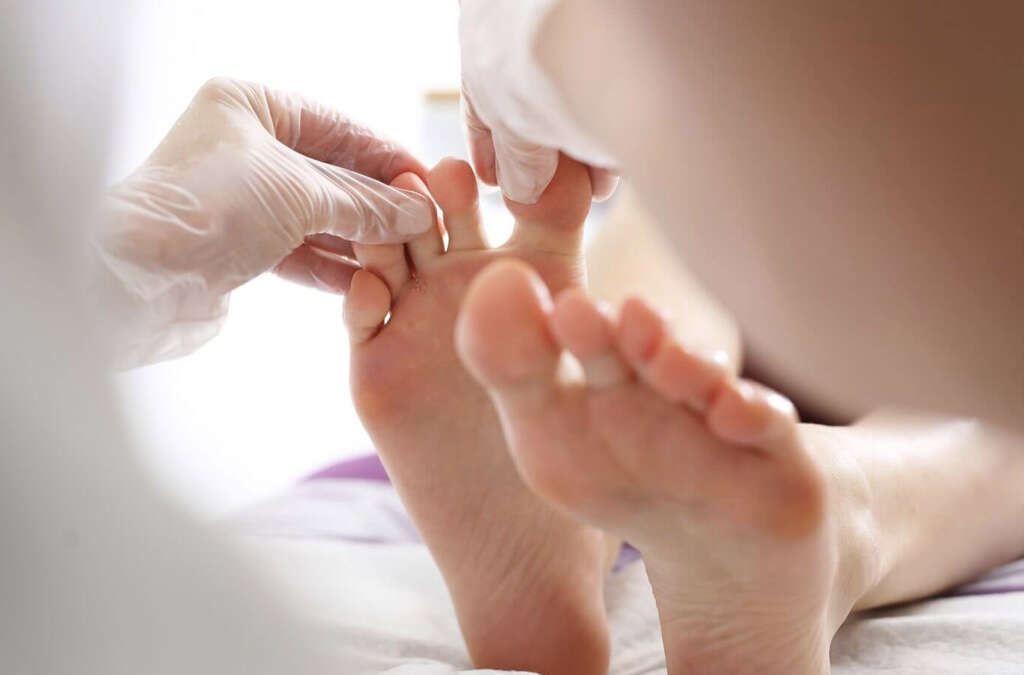
6. Complications
The complications of tinea pedis are not severe, but they are uncomfortable. It is possible for the condition to spread to other parts of the body. Since the rash is often itchy, people tend to scratch or pick at the infected area. Doing so can spread the infection to the hands.
It is also possible for the fungus to begin growing under the toenails. When the infection spreads to this area, it becomes very difficult to treat. A final complication arises when the fungus is transferred to the groin via the hands or a towel. The fungus that causes athlete’s foot is also responsible for jock itch.
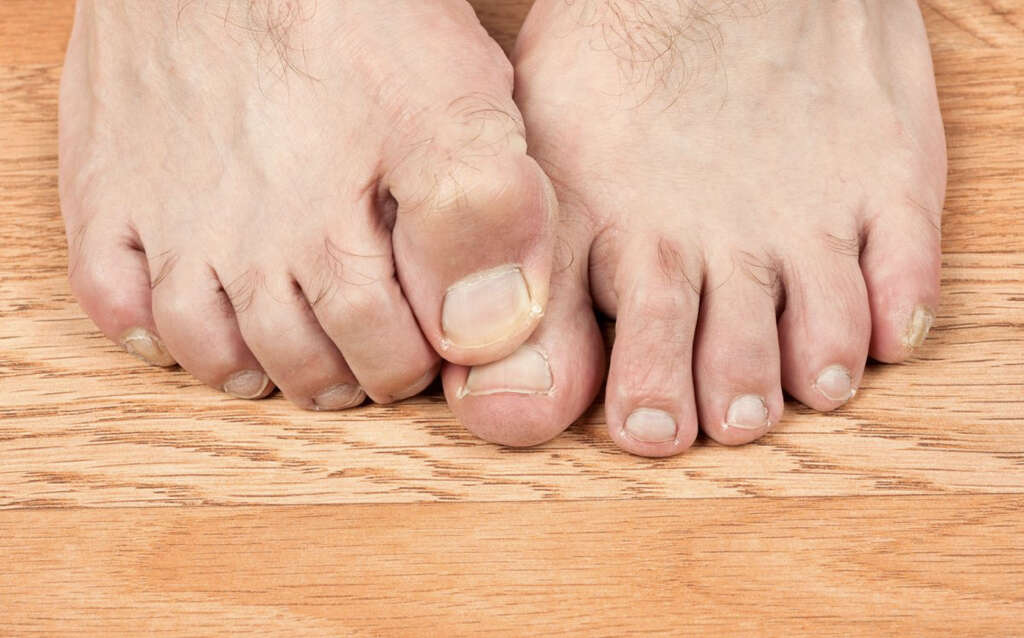
7. Treatment & Management
Mild cases of tinea pedis are often successfully treated with topical over-the-counter medications.2Crawford, F. and S. Hollis. Topical Treatments for Fungal Infections of the Skin and Nails of the Foot. Cochrane Database of Systematic Reviews vol. 18,3 (2007): CD001434. doi:10.1002/14651858.CD001434.pub2. Sometimes these substances resolve the issue quickly, but there is the potential for recurrence. More severe cases require stronger medications taken over the course of two to four weeks.
Some people do not respond to topical treatment, necessitating a prescription for oral anti-fungal drugs. These medications are typically required for several weeks to clear up the infection.3Gupta, A.K. and E.A. Cooper. Update in Antifungal Therapy of Dermatophytosis. Mycopathologia vol. 166,5-6 (2008): 353. doi:10.1007/s11046-008-9109-0. It is important to keep the feet clean, dry and protected to improve conditions for recovery.

8. Prevention
Preventative measures reduce the potential for contracting tinea pedis or experiencing a recurrence. Dry the space between the toes thoroughly after showering. People who have feet that sweat easily should consider changing their socks a couple of times a day. Do not go barefoot in public places.
Taking care to select proper footwear is also important. Avoid shoes that are tight-fitting and made of a material that does not breathe. Be sure to alternate shoes on a daily basis to give each pair an opportunity to dry out between uses. Sharing shoes should be avoided. It is a good idea to apply anti-fungal powders to the feet daily.
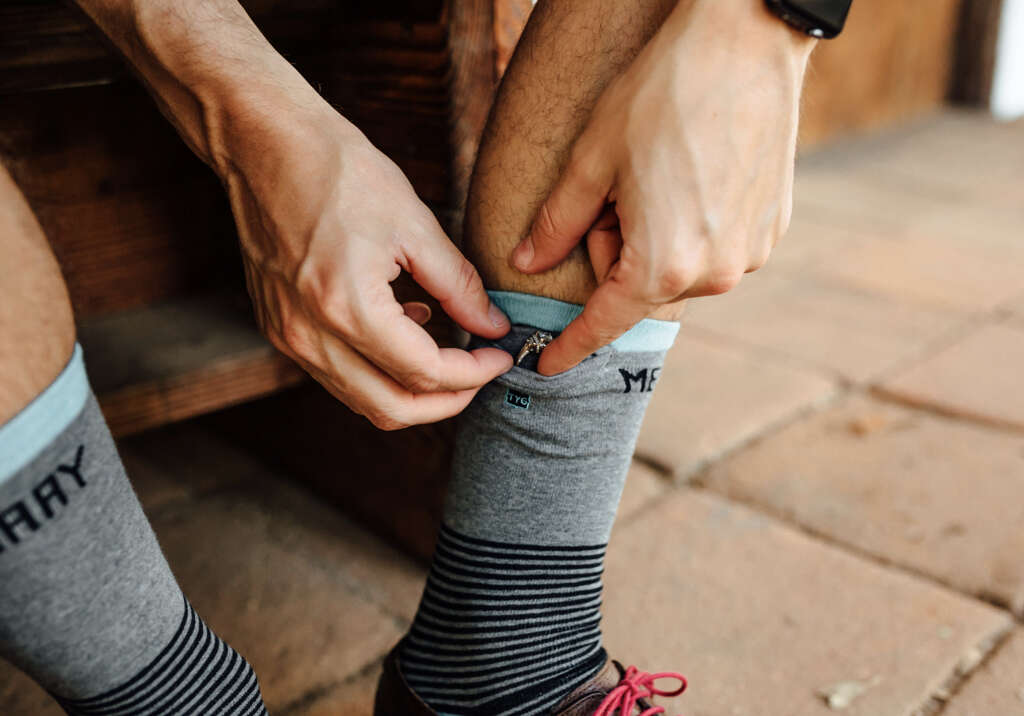
9. Prognosis
Athlete’s foot is easily preventable when the right measures are taken. People who develop the condition are able to treat it with OTC or prescription topical medications. Once the infection is cleared, it is still possible that it will recur on a regular basis, especially if steps to prevent it are not taken.
For some, eliminating the infection requires oral medication. In these instances, it can take several weeks for the infection to clear. Those who have the condition in the toenails usually find it difficult to treat, which means it may persist for a long time. Additional treatments are necessary when the infection spreads to other parts of the body.
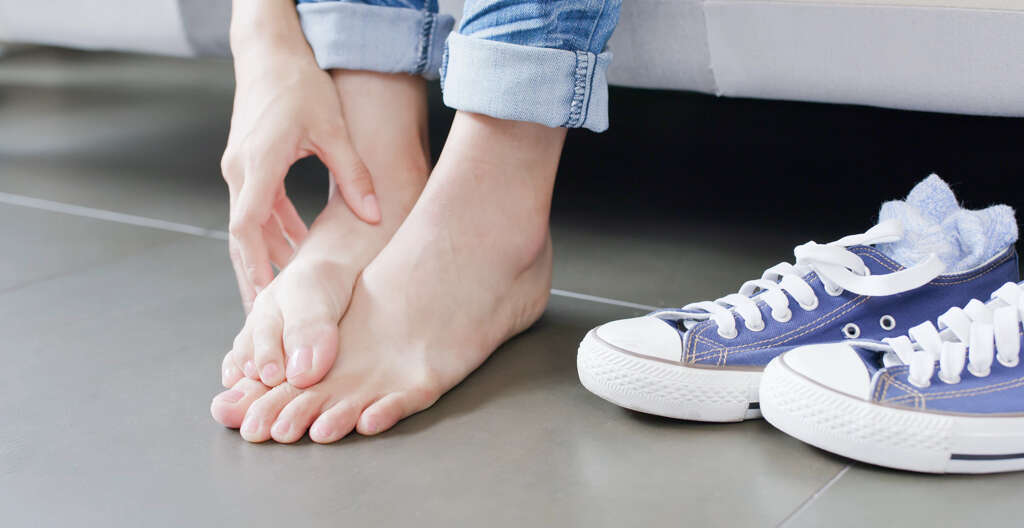
10. When to See a Doctor
People often treat cases of tinea pedis using topical OTC antifungal medications. These treatments do not require a doctor’s visit or prescription. However, if you are uncertain about the cause of your rash, you may want to make an appointment with your healthcare provider.
If OTC treatment does not improve the condition within two weeks, you should contact your doctor. It may be necessary to prescribe a stronger medication. It is also important to rule out other potential causes. People who have diabetes should make an appointment to see their doctor if they suspect they have tinea pedis.
